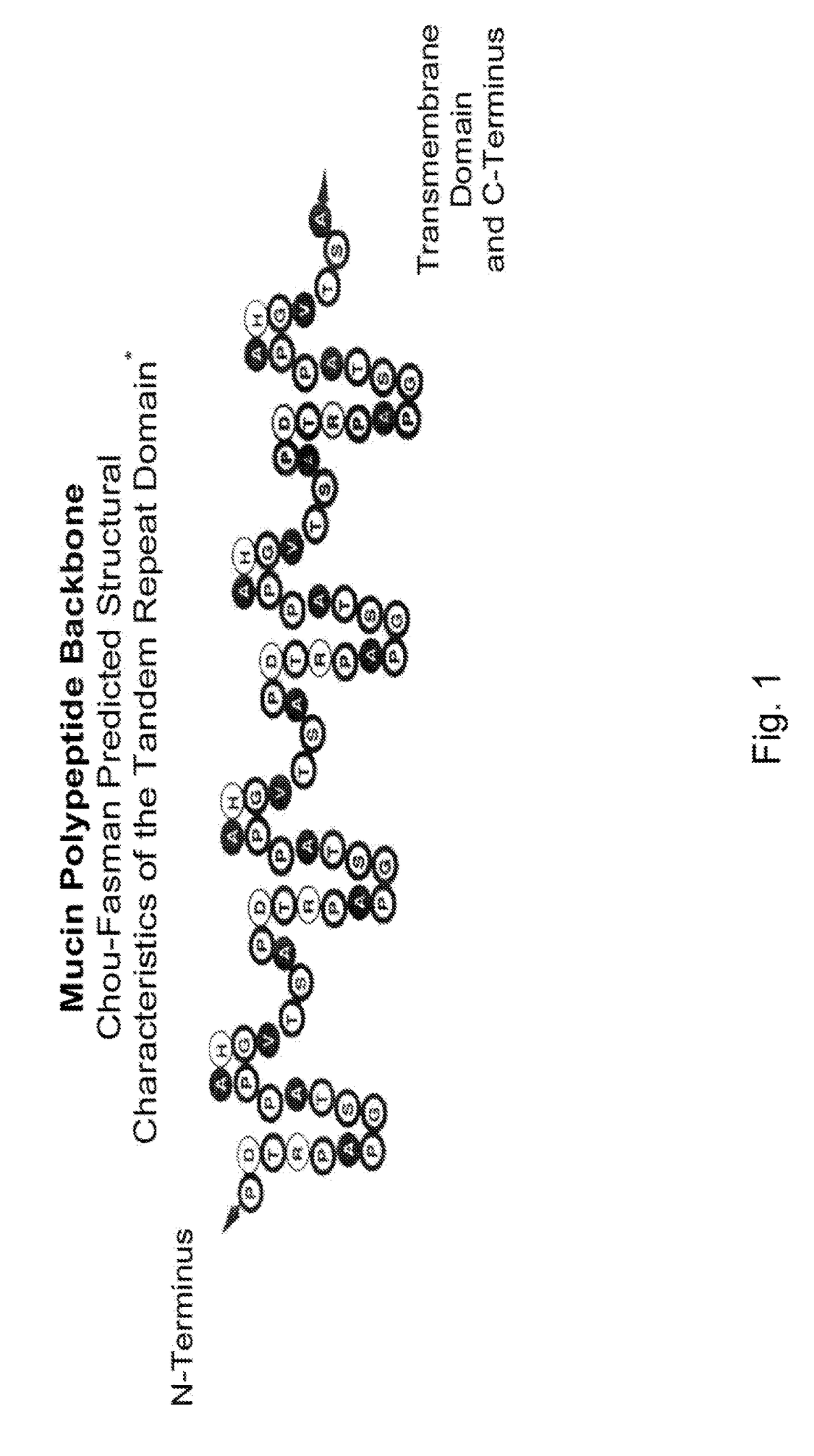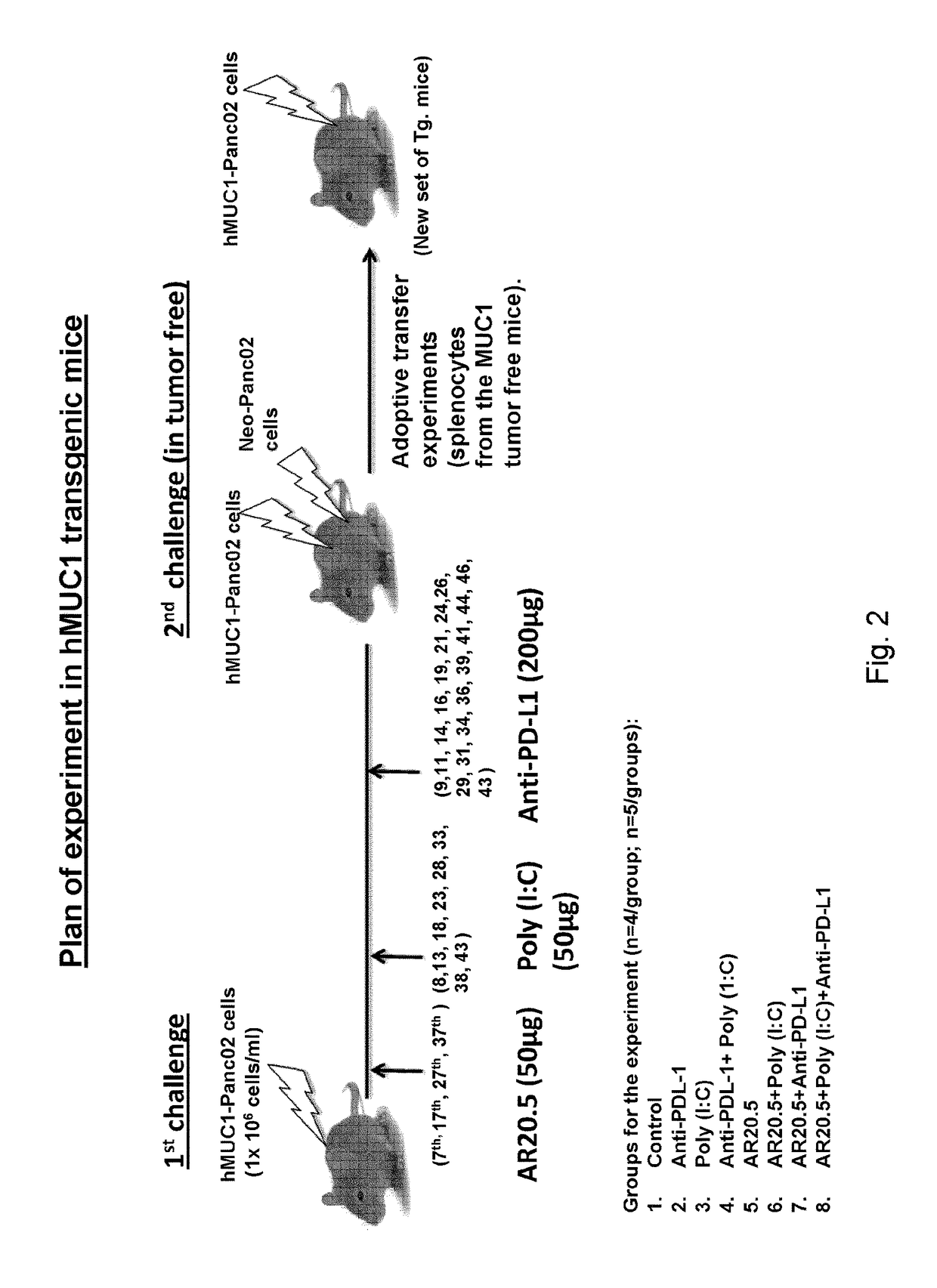Tumor antigen specific antibodies and tlr3 stimulation to enhance the performance of checkpoint interference therapy of cancer
a technology of tumor antigen and tlr3 stimulation, which is applied in the direction of antibody medical ingredients, drug compositions, immunological disorders, etc., can solve the problems of limited immune checkpoint blockade therapy performance, and achieve specific three-dimensional structure characteristics and reduce growth kinetics
- Summary
- Abstract
- Description
- Claims
- Application Information
AI Technical Summary
Benefits of technology
Problems solved by technology
Method used
Image
Examples
example 1
In Vivo Tumor Challenge Studies in Mice Immunized by Antigen Specific IgG and Combinations
[0222]In order to first establish the principle of this therapeutic approach, an antibody with suitable specificity and tumor antigen expressing tumor model to be evaluated in an animal tolerant to that tumor antigen are required. A Panc02 tumor cell line transfected with the human MUC1 gene (panc02.muc1) is selected. The panc02 tumors are syngeneic to BL6 mice and the panc02.muc1 is fully syngeneic to the BL6.Tg mice transgenic for human MUC1. The antibody used for the demonstration experiment is mAb-AR20.5 from Quest PharmaTech, a murine monoclonal antibody previously demonstrated to induce immunity to its ligand MUC1 in multiple experimental systems. AR20.5 is an IgG 1κ monoclonal antibody that binds to the sequence DTRPAP in the Core Tandem Repeat of MUC1 (See FIG. 1).
[0223]Experimental Design
[0224]1) MUC1.Tg animals (i.e. immunologically tolerant to MUC1): all animals are challenged with 1...
example 2
Rechallenge of Tumor Resistant Animals to Confirm Immune Memory and Specificity
[0230]Animals from the primary challenge experiment (example 1) that showed no disease progression at day 47 days received no further treatment and were observed for 30 additional days (to 77 days). If there was still no tumor growth, these surviving animals were re-challenged in one flank with Panc02.MUC1 (1×106) and in the other flank with control Panc02 cells (1×106) not expressing MUC1, to determine if there is a memory response to MUC1, and whether there is evidence of epitope spreading or general immunity to other tumor antigens on Panc02 cells. Re-challenged animals were observed for up to 60 additional days for evidence of tumor growth (137 days post primary challenge and 60 days post-secondary tumor challenge). (see again FIG. 2 for schema)
[0231]A notable proportion of these mice exhibited antigen-specific rejection of MUC1-Panc02 cells but did not reject antigen negative neo control tumor cells ...
example 3
Splenocytes Transfer from Tumor-Immune Mice
[0232]Splenocytes from a tumor-immune mice that had been immunized with the AR20.5+Poly(I:C)+Anti-PDL-1 combination were harvested and cultured for five days and then transferred into two fresh MUC1.Tg transgenic mice through tail vein injection. Post transfer, the mice were challenged with 2×106 cells / ml MUC1-Panc02 cells monitored the growth of tumor for additional days. A control mouse that had not received prior treatment or primary challenge also received the same challenge in both flanks. The results are shown in FIG. 8. One of the two mice receiving the transferred splenocytes completely resisted the tumor challenge and in the second mouse the appearance of tumor was delayed relative to the untreated control mouse.
[0233]The experiment confirms that tumor specific resistance resides in the splenic compartment.
PUM
| Property | Measurement | Unit |
|---|---|---|
| soluble | aaaaa | aaaaa |
| pharmaceutical compositions | aaaaa | aaaaa |
| pH | aaaaa | aaaaa |
Abstract
Description
Claims
Application Information
 Login to View More
Login to View More - R&D
- Intellectual Property
- Life Sciences
- Materials
- Tech Scout
- Unparalleled Data Quality
- Higher Quality Content
- 60% Fewer Hallucinations
Browse by: Latest US Patents, China's latest patents, Technical Efficacy Thesaurus, Application Domain, Technology Topic, Popular Technical Reports.
© 2025 PatSnap. All rights reserved.Legal|Privacy policy|Modern Slavery Act Transparency Statement|Sitemap|About US| Contact US: help@patsnap.com



